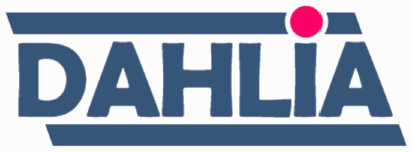DAHLIA has been developing a Very High Performance microprocessor System on Chip (SoC) based on STMicroelectonics European 28nm FDSOI technology with multi-core ARM processors for real-time applications, eFPGA for flexibility and key European IPs, enabling faster and cost-efficient development of products for multiple space application domains.

The performance is expected to be 20 to 40 times the performance of the existing SoC for space. This performance level, combined with a large set of integrated peripherals including dedicated on-chip functions for GNSS, TM and TC support, will enable key space applications to be executed within the same microprocessor significantly reducing cost and mass and boosting competitiveness of future European space equipments.
With the highest cumulative number of European satellites and electronics equipments successfully operating in orbit, Airbus Defense and Space and Thales Alenia Space represent together the indisputable best positioned companies in Europe to ensure the maximum relevance of the DAHLIA SoC for its future use by the whole European Space community.
Beyond Space applications, the adoption of the ARM processor will enable the convergence with terrestrial applications benefiting from the strong ARM ecosystem while the new SoC will ensure European strategic non dependence for the most critical component on board.
Objectives
DAHLIA will target an innovative real-time MPSoC for space applications where mixed-criticalities between co-running applications will need to be guaranteed and where resources will be allocated in time and space to the running applications. Overall, the main novelties of the project will be:
- European None Dependence achieved through the use of European semiconductor technology and European IP technologies. The Consortium is made of key technology industrial partners.
- Development of a Very High Performance microprocessor while achieving state-of-the-art real-time performances based on European 28nm FDSOI with multicore ARM processor for real time applications and a very large embedded FPGA device for flexibility support. The chip will be designed for the complete platform with 28 nm FDSOI technology offering outstanding intrinsic radiation robustness.
- A common definition of the SoC between the main actors of the European Space Industry, targeting the largest scope of space applications, aiming in optimizing the development costs l and leading to an increased competitiveness of the European Space Industry.
- Development of real-time support with the new ARM Cortex-R52 processors to cope with the mixed-criticalities of the co-running applications.
- The usage of the naturally immune to latchup STMicroelectronics 28nm FDSOI technology to implement the High performance Microprocessor.
DAHLIA expects the following results
The result of DAHLIA will consist in an innovative radiation hardened SoC in 28nm FDSOI technology with a very large embedded FPGA and a multi-core architecture based on the state of the art Cortex-R52 cores from ARM.
Potential impacts
The main impacts of DAHLIA will be:
- Reduce the dependence on critical technologies and capabilities from outside Europe for future space applications.
- Develop, or regain in the midterm, the European capacity to operate independently in space, e.g. by developing in a timely manner reliable and affordable space technologies that in some cases may already exist outside Europe or in European terrestrial applications.
- Enhance the technical capabilities and overall competitiveness of European space industry satellite vendors on the worldwide market.
- Open new competition opportunities for European manufacturers by reducing the dependency on export restricted technologies that are of strategic importance to future European space efforts.
- Enable the European industry to get non restricted access to high performance technologies that will allow increasing its competitiveness and expertise in the space domain.
- Improve the overall European space technology landscape and complement the activities of European and national space programs.
- Greater industrial relevance of research actions and output as demonstrated by deeper involvement of industry, including SMEs, and stronger take-up of research results.
